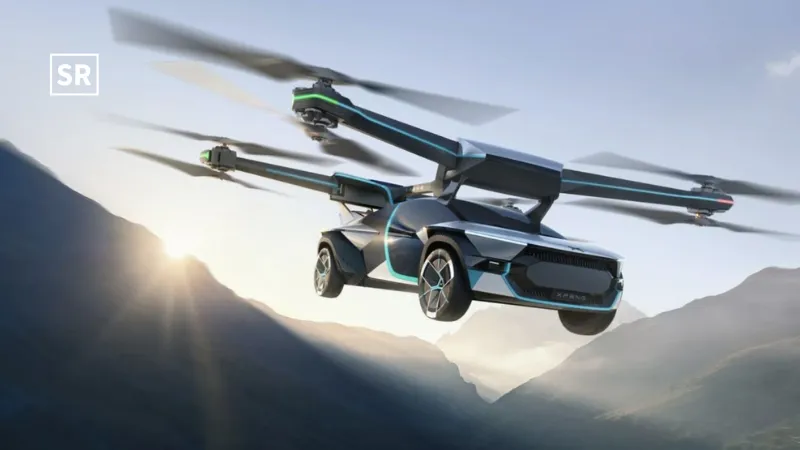
Some of China’s biggest carmakers, including Hongqi (Red Flag), Geely Auto, and Tesla competitor Xpeng, are now racing to develop flying cars. They aim to gain an early advantage as the electric vehicle market peaks.
Leading companies like AeroHT, which is connected to Xpeng, are getting closer to making their drone businesses a reality.
This is happening with support from Beijing for the “low-altitude mobility economy,” helping drive innovations in the global air travel industry.
According to a statement, AeroHT recently applied to the Civil Aviation Administration of China (CAAC) for a license to build its first flying car.
Meanwhile, Ehang has already received a license to offer low-altitude air travel services to passengers.
Hongqi, a part of China’s oldest carmaker FAW Group, Geely Auto, and other companies like GAC Group and Chery Automobile are investing heavily in developing flying cars and drones.
These companies focus on urban air mobility to help solve city traffic congestion.
“The flying cars will take some time before they generate profits, given the high production costs and small demand at present,” said Yin Ran, an angel investor in Shanghai. “The leading carmakers are investing [in them] for the future because they design and manufacture fancy transport tools to display their technology advancements.”
The low-altitude economy involves businesses using aerial vehicles flying below 1,000 meters. This concept has gained traction since 2021, when Beijing introduced rules and policies to support aerial travel and connectivity in and around cities.
AeroHT’s Land Aircraft carrier includes a minivan that charges the electric vertical take-off and landing (VTOL) aircraft stored at the back. The company’s production facilities are 70% finished and could start operating by the fourth quarter.
The start-up plans to sell 5,000 units, each costing around US$200,000, according to co-founder and chief designer Wang Tan in an interview last year.
Hongqi and Geely have also entered the new drone market to compete with established companies like Ehang and DJI.
They are using their automotive supply chains and expertise in electrification, digital technology, and self-driving technology to do so.
Thanks to government support, technological advances, and growing investments, China’s low-altitude economy is expected to grow more than five times, reaching 3.5 trillion yuan (US$485.7 billion) by 2035, compared to 2024, according to the CAAC. Since mid-2024, electric vehicles (EVs) have made up more than half of all new car sales in mainland China.
Hongqi, a brand that has been transporting Chinese state leaders since the 1950s, is also working on developing flying vehicles as part of its plan to adapt to the future of transportation fully.
State-owned carmaker GAC revealed its flying car, the GOVY, in December and introduced its first composite-wing flying car, the GOVY AirJet. The company’s Robo-AirTaxi system uses the GOVY AirCar for road trips up to 20km and the AirJet for air travel up to 200km.
Geely established Aerofugia, a subsidiary producing uncrewed aerial vehicles (UAVs) and passenger eVTOLs in 2020. It focuses on low-altitude transport for tourism and medical rescues. According to its CEO, Guo Liang, its operating cost was about 20 to 33 percent lower than traditional helicopters.
The company plans to begin trial flights in Chengdu in the second half of next year and aims to focus on large-scale development after 2030.
State-owned Changan Automobile announced a partnership with Ehang late last year to work on the research, development, manufacturing, sales, and operation of eVTOLs (electric vertical take-off and landing vehicles). The companies are also considering creating a joint venture to develop technologies for future transportation systems.
In October, Chery showed off a flying car prototype at its Global Innovation Conference in Anhui province, central China. The car also completed a test flight covering around 80 kilometers.
Read more- ANEXT Bank Reports 83.5% Revenue Growth in 2024





